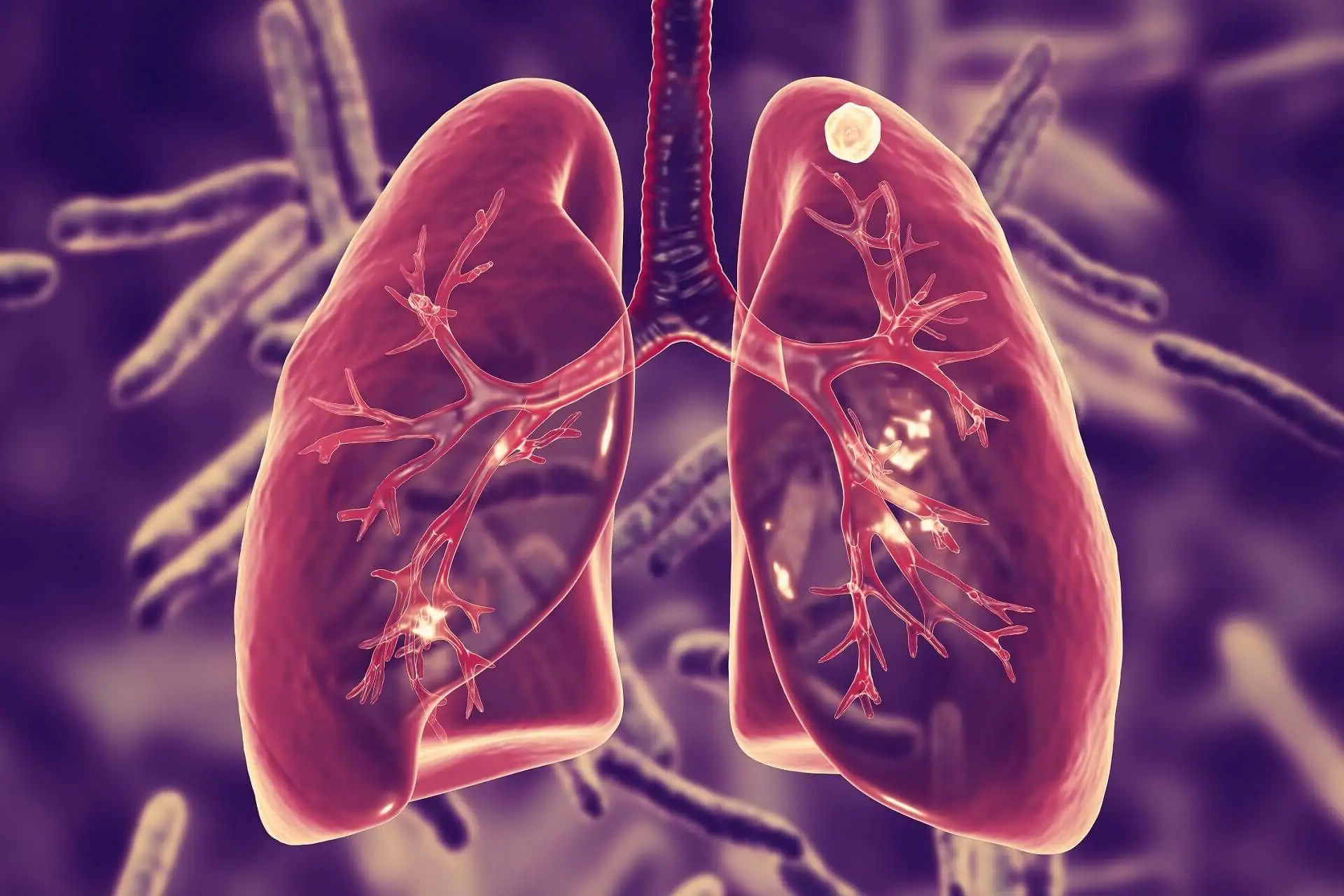
Ever heard of chronic berylliosis? This serious lung disease, also known as chronic beryllium disease (CBD), results from exposure to beryllium, a metal used in industries like aerospace and electronics. Workers in these fields face higher risks. Symptoms can sneak up slowly, making it hard to breathe, causing chest pain, and leading to weight loss. Diagnosing CBD involves checking your work history, blood tests, and lung biopsies. While there's no cure, treatments can help manage symptoms. Knowing the facts about chronic berylliosis can protect workers and promote safer environments. Ready to learn more? Let's dive into the key facts about this condition.
Key Takeaways:
- Chronic berylliosis is a serious lung disease caused by exposure to beryllium in industries like aerospace and electronics. Early detection through screening programs is crucial for preventing long-term health issues.
- Workers exposed to beryllium can develop chronic berylliosis, leading to severe respiratory problems. Strict safety protocols and minimizing exposure are essential for preventing this disease.
Understanding Chronic Berylliosis
Chronic berylliosis, also known as chronic beryllium disease (CBD), is a serious condition caused by exposure to beryllium. This metal is used in various industries, and prolonged exposure can lead to severe health issues. Let's explore some key facts about this disease.
-
Definition and Causes
Chronic berylliosis is a granulomatous disease triggered by an immune response to beryllium exposure. Beryllium is a lightweight, strong metal used in aerospace, electronics, and nuclear components. -
Exposure Risks
The risk of exposure occurs in settings where beryllium or its compounds become airborne as vapors, fumes, small particles, or dust. Workers in industries that manufacture and process beryllium are at high risk. -
Symptoms
Symptoms can vary in severity and onset. Common symptoms include difficulty breathing, chest pain, chronic coughing, weight loss, and general weakness. Pulmonary fibronodular disease is also a characteristic feature.
Acute vs. Chronic Berylliosis
Understanding the difference between acute and chronic berylliosis is crucial for proper diagnosis and treatment.
-
Acute Berylliosis
Acute berylliosis is rare and develops suddenly due to exposure to beryllium. It primarily causes severe lung inflammation (pneumonitis) with symptoms like coughing and difficulty breathing. -
Chronic Berylliosis
Chronic berylliosis develops over time and is marked by a systemic immune response to beryllium. This condition can progress slowly, making early detection challenging.
Immune Response and Granulomas
The body's immune response to beryllium exposure plays a significant role in the development of chronic berylliosis.
-
Immune Response
Chronic berylliosis results from an exaggerated immune response (delayed-type hypersensitivity reaction) in individuals sensitized to beryllium. Sensitization can develop rapidly or years after initial exposure. -
Granulomas Formation
In those with CBD, heightened immune reactions lead to the formation of inflammatory masses or nodules (granulomas) in the lungs and other tissues. These granulomas affect the normal structure and function of organs.
Diagnostic Methods
Accurate diagnosis is essential for managing chronic berylliosis effectively.
- Diagnostic Methods
Diagnosis is based on occupational history, positive blood or bronchoalveolar lavage (BAL) beryllium lymphocyte proliferation test (BeLPT), and granulomatous inflammation on lung biopsy. The BeLPT determines beryllium sensitivity.
Occupational Safety and Health Administration (OSHA) Guidelines
OSHA guidelines aim to minimize the risk of developing CBD by reducing permissible exposure limits for beryllium.
- OSHA Guidelines
Despite regulations, many workers continue to be exposed to hazardous levels of beryllium, leading to numerous cases each year.
Prevalence and Screening Programs
Early detection through screening programs is vital for preventing chronic berylliosis.
-
Prevalence
Approximately ten percent of exposed workers will develop CBD, highlighting the importance of early detection and screening programs. -
Screening Programs
National screening programs for nuclear workers include the BeLPT to identify individuals with beryllium sensitivity. Early detection helps avoid misdiagnosis and provides timely treatment.
Misdiagnosis and Treatment Options
Misdiagnosis can delay treatment, making it crucial to differentiate CBD from other conditions.
-
Misdiagnosis
Chronic beryllium disease can often be confused with conditions like COPD or sarcoidosis. A comprehensive diagnostic approach is necessary for accurate diagnosis. -
Treatment Options
While there is no cure for CBD, treatments can slow disease progression, improve blood-oxygen levels, and relieve symptoms. Common treatments include glucocorticoids and immunosuppressive agents. Concentrated oxygen therapy can also help.
Lifestyle Modifications and Complications
Lifestyle changes can help manage symptoms and prevent complications.
-
Lifestyle Modifications
Changing air filters, using dehumidifiers, and frequent dusting can reduce irritants in the air. Smoking cessation is crucial for those with beryllium disease. -
Complications
Untreated or inadequately treated CBD can lead to severe complications, including life-threatening respiratory failure. Chronic inflammation and granuloma formation can also cause liver damage and other systemic issues.
Energy Employees Occupational Illness Compensation Program (EEOICPA)
Workers diagnosed with CBD can receive benefits under the EEOICPA.
-
EEOICPA Benefits
The program provides financial compensation and medical benefits to employees with occupational illnesses, including CBD. -
Eligibility Criteria for EEOICPA
Eligibility under Part B includes an abnormal BeLPT or BeLTT, lung pathology consistent with CBD, and specific clinical and radiological findings. For cases diagnosed before January 1, 1993, a history of beryllium exposure and specific clinical criteria are required. -
Benefits Under EEOICPA
Employees diagnosed with CBD under Part B may receive a lump sum payment of $150,000 and payment of medical expenses from the claim filing date. Eligible survivors may also receive a lump sum payment of $150,000 (divided equally among eligible survivors).
Skin Manifestations and Industrial Uses
Beryllium exposure can also affect the skin, and the metal has numerous industrial applications.
-
Skin Manifestations
Skin manifestations include dermatitis, beryllium ulcers, and dermal granulomas. Chronic, non-healing ulcers may result from beryllium implantation into an abrasion or laceration, requiring excision for treatment. -
Industrial Uses
Beryllium is used in aerospace, electronic, and nuclear components; high-technology ceramics; and dental alloys. Before the 1950s, it was also used in fluorescent light manufacturing.
Historical Context and Public Health Concerns
Beryllium's history and its public health impact are significant.
-
Historical Context
Beryllium was first identified in 1798 by French chemist Nicolas-Louis Vauquelin. Its industrial applications have grown, increasing exposure risks for workers. -
Public Health Concerns
The metal's toxicity and potential for causing severe respiratory diseases highlight the need for strict safety protocols in industries where it is used.
Research and Advances
Ongoing research aims to improve diagnostic methods and treatment strategies for chronic berylliosis.
- Research and Advances
Recent advances in understanding the biomolecular basis of CBD have improved diagnostic methods and treatment strategies. Research continues to uncover the mechanisms behind beryllium-induced immune responses and develop more effective treatments.
Similarities with Sarcoidosis and Prevention Strategies
Chronic beryllium disease shares similarities with sarcoidosis, making accurate diagnosis crucial.
-
Similarities with Sarcoidosis
CBD shares some similarities with sarcoidosis, another granulomatous lung disorder. However, the specific immune response to beryllium distinguishes CBD from sarcoidosis. -
Prevention Strategies
Prevention strategies include minimizing exposure to beryllium dust and fumes, using personal protective equipment (PPE), and implementing strict safety protocols in workplaces where beryllium is handled. Early detection through screening programs is also essential for preventing long-term health consequences.
Final Thoughts on Chronic Berylliosis
Chronic berylliosis, or chronic beryllium disease (CBD), is a serious condition caused by exposure to beryllium. Workers in industries like aerospace, electronics, and nuclear components are at high risk. Symptoms include difficulty breathing, chest pain, and chronic coughing. Diagnosis involves a detailed occupational history and tests like the BeLPT. While there's no cure, treatments can slow disease progression and improve quality of life. Preventing exposure through safety protocols and personal protective equipment is crucial. Early detection via screening programs can make a big difference. Misdiagnosis is common, so accurate diagnosis is key. The Energy Employees Occupational Illness Compensation Program (EEOICPA) offers financial and medical benefits to affected workers. Understanding and addressing chronic berylliosis is essential for protecting workers' health and preventing long-term consequences. Continued research and public health efforts are vital in tackling this occupational lung disease.
Frequently Asked Questions
Was this page helpful?
Our commitment to delivering trustworthy and engaging content is at the heart of what we do. Each fact on our site is contributed by real users like you, bringing a wealth of diverse insights and information. To ensure the highest standards of accuracy and reliability, our dedicated editors meticulously review each submission. This process guarantees that the facts we share are not only fascinating but also credible. Trust in our commitment to quality and authenticity as you explore and learn with us.


